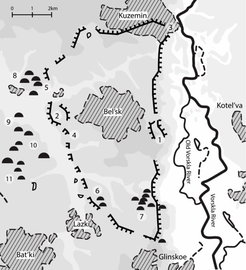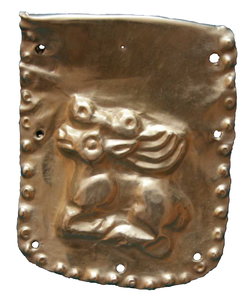Scythian-era urbanites in the Pontic forest-steppe did not travel far from home
Contrary to popular accounts of Scythian era populations, new research demonstrates that urbanites living in the vicinity of Bel’sk engaged in localized mobility practices. Their diets varied from heavy reliance on millet to more pastoral products or wheat and barley. The combination of low mobility and a dietary intake based on domesticated crops suggests local groups engaged in sedentary agriculture and herding, which contrasts sharply with the picture of highly mobile Scythian-era herders dependent on livestock, as portrayed in historical sources.

Before the Pontic steppe and forest-steppe became the breadbasket of the Soviet Union, farmers from the urban complex of Bel’sk were growing millet, wheat, and barley as part of a mixed agriculture and herding economy. An international team of researchers has uncovered direct evidence of millet consumption and mobility practices through stable isotopic analyses of human tooth enamel. “Our research suggests that only a few individuals were engaged in long-distance mobility,” states Alicia Ventresca Miller, lead author, formerly of Kiel University and now at the Max Planck Institute for the Science of Human History and the University of Michigan. “The majority of the individuals we examined from Bel’sk were living local to the site.”
Forest-Steppe Urbanization

Bel’sk is a massive fortified complex comprised of several settlements, numerous cemeteries, and monumental fortification walls. The site spans approximately 5000 hectares, with the wall linking three separate fortified settlements into a single complex (Figure 1). The settlements in the Bel’sk complex include various types of dwellings, as well as ovens for pottery, foundries, granaries, and evidence of a well-developed craft industry. “Bel’sk acted as a crucial site in the region, with its central location allowing for an important role in intensive craft production and exchange,” explains James Johnson, co-author, formerly of the University of Copenhagen and now at the University of Wyoming. People from Bel’sk were also “taking part in the exchange of armaments and horse gear associated with a steppe Scythian identity,” explains Sergey Makhortykh, co-author, from the Institute of Archaeology in Kyiv (Figure 2).
Dietary Diversity and Localized Mobility
Evidence of domesticated livestock suggests that pastoral products were an important part of the economy, while large granaries found at the site confirm that grains were also a key part of the local diet. The researchers conducted isotopic analysis that showed variation in the dietary intake of different groups at Bel’sk, with a wide range of inputs from both agricultural and pastoral subsistence strategies. Several individuals had diets that consisted mainly of millet, indicating the importance of this crop for some urbanites. The results also showed that populations at Bel’sk did not travel far from home, with only a few individuals moving to the urban center from greater than 90 kilometers away. The majority of individuals from Bel’sk cemeteries were not highly mobile at an inter-regional scale, which suggests that goods, rather than populations, were being moved across the varied environmental zones of the Pontic landscape.
This study shows the great potential of multi-isotopic studies to provide evidence that links human dietary intake and mobility in the past. Future research should build upon this study to clarify the extent to which rural communities during the Scythian era engaged in agriculture or herding, as well as the impact of residential mobility within these populations.

